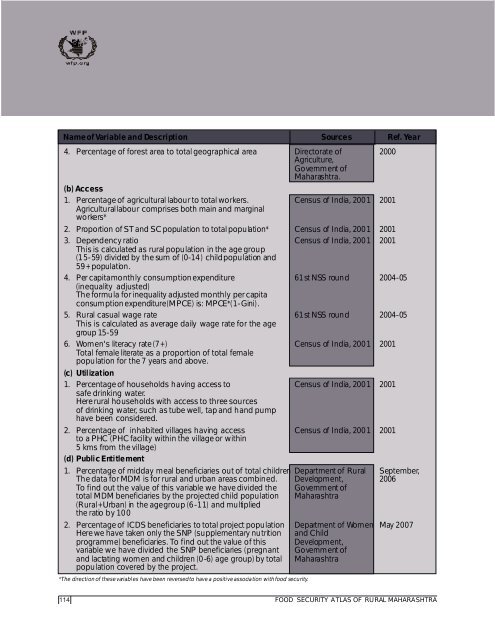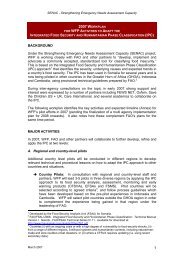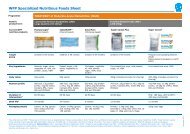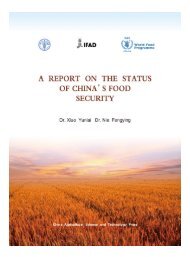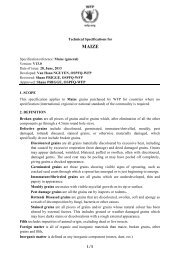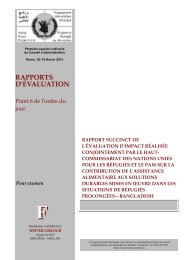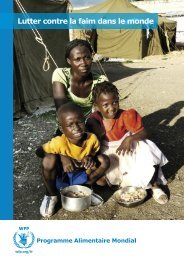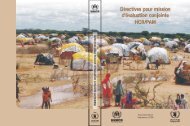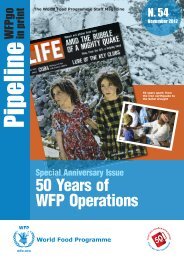Food Security Atlas Of RURAL MAHARASHTRA - WFP Remote ...
Food Security Atlas Of RURAL MAHARASHTRA - WFP Remote ...
Food Security Atlas Of RURAL MAHARASHTRA - WFP Remote ...
Create successful ePaper yourself
Turn your PDF publications into a flip-book with our unique Google optimized e-Paper software.
Name of Variable and Description Sources Ref. Year4. Percentage of forest area to total geographical area Directorate of 2000Agriculture,Government ofMaharashtra.(b) Access1. Percentage of agricultural labour to total workers. Census of India, 2001 2001Agricultural labour comprises both main and marginalworkers*2. Proportion of ST and SC population to total population* Census of India, 2001 20013. Dependency ratio Census of India, 2001 2001This is calculated as rural population in the age group(15-59) divided by the sum of (0-14) child population and59+ population.4. Per capita monthly consumption expenditure 61st NSS round 2004-05(inequality adjusted)The formula for inequality adjusted monthly per capitaconsumption expenditure (MPCE) is: MPCE*(1-Gini).5. Rural casual wage rate 61st NSS round 2004-05This is calculated as average daily wage rate for the agegroup 15-596. Women's literacy rate (7+) Census of India, 2001 2001Total female literate as a proportion of total femalepopulation for the 7 years and above.(c) Utilization1. Percentage of households having access to Census of India, 2001 2001safe drinking water.Here rural households with access to three sourcesof drinking water, such as tube well, tap and hand pumphave been considered.2. Percentage of inhabited villages having access Census of India, 2001 2001to a PHC (PHC facility within the village or within5 kms from the village)(d) Public Entitlement1. Percentage of midday meal beneficiaries out of total children Department of Rural September,The data for MDM is for rural and urban areas combined. Development, 2006To find out the value of this variable we have divided the Government oftotal MDM beneficiaries by the projected child population Maharashtra(Rural +Urban) in the age group (6-11) and multipliedthe ratio by 1002. Percentage of ICDS beneficiaries to total project population Department of Women May 2007Here we have taken only the SNP (supplementary nutrition and Childprogramme) beneficiaries. To find out the value of this Development,variable we have divided the SNP beneficiaries (pregnant Government ofand lactating women and children (0-6) age group) by total Maharashtrapopulation covered by the project.*The direction of these variables have been reversed to have a positive association with food security.114 FOOD SECURITY ATLAS OF <strong>RURAL</strong> <strong>MAHARASHTRA</strong>


